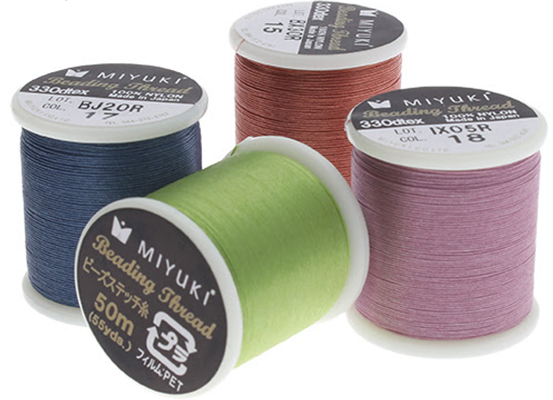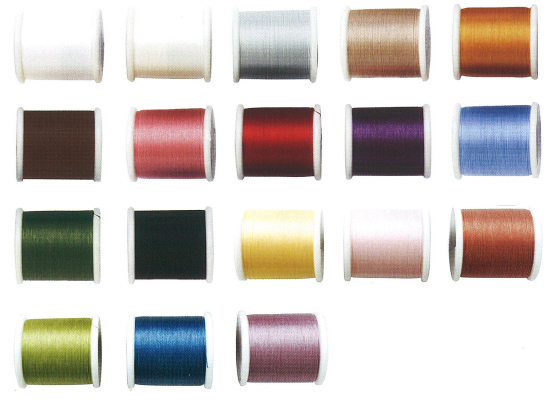| Miyuki Beading Thread |
We beaders can be a funny lot sometimes; what with our go-to colour palettes always creeping their way into our projects, or continually using our favourite (usually horribly bent) beading needle and even having our own designated 'beading seats' in our households. Our personal beading habits certainly make themselves known!
When it comes to different types of beading thread it's no different. Some people are die-hard Fireline users, others wouldn't use anything other than SoNo and some will just use whatever they have in their stash. When it comes to beading thread, there is no right or wrong choice to be made as there are so many outside factors that contribute to how your overall piece will look and feel - your tension, the choice of beads, the inherent 'movement' of beads in your design, how your beadwork is to be worn or displayed to name a few.
Whatever your preference, we wanted to introduce Miyuki beading thread into your mix as we think it's a great option to have in your kit. For a while now Miyuki has produced its own beading thread in Japan, and it's been slowly gaining popularity amongst all types of beaders. Let's take a look at some of the characteristics of this thread. |
|
The thread is made up of 100% nylon filaments that are lightly twisted together and pre-waxed. For all technical afficionados, the thread is 330 dtex (the amount of grams per 1,000m of yarn - it is a direct measure of linear density).
Being nylon, the thread is smooth, light and thin, but is also strong and can be pulled a fair bit when being worked with. It can be cut easily and being so thin it threads onto a needle with minimum fuss. Although it is pre-waxed, you can re-wax the ends of the thread before threading onto a needle to help avoid any tiny filaments being split. And speaking of the filaments, the thread itself is tangle and fray-resistant. However, like most nylon threads, if it is pierced or snagged by your needle the filaments can start to become separated. Again, additional waxing can help to tame these fly-aways as they occur. Another tip is if you are planning to have multiple thread passes through a bead, hold the thread taught against the bottom hole and slowly push your needle through the top of the hole to help minimise the risk of catching the thread.
| It's available in a choice of colours, from the standard black and white, to soft pink and baby blue, to vibrant red, purple and green - perfect to tone in or clash with your choice of beads. Sold on a 50m (55 yard) reel there's plenty of thread to be used. |
Miyuki thread does have a small amount of 'stretch' in it (similar to KO), so is best used for designs and projects that need a small amount of flexibility, bounce and movement. Think tassels, fringes and stitched round bangles - they all need that ability to be able to move when worn, without fear of the tension being so tight that the beadwork will end up splitting apart.
We'd always suggest pre-stretching the thread (simply hold the length of it between your hands and gently pull so it stretches it slightly - you should feel it give a little but not so much that you damage the thread itself). Pre-stretching will help minimise any distortion in your beadwork that can occur after being worn for a while. Likewise, if you know your thread tension is on the looser side, it's worth trying to tighten it up when using this thread, otherwise the stretch in the thread will increase the looseness in your stitching over time.
The Miyuki thread is very versatile as it works equally well for off-loom stitches, bead-loomed pieces or bead embroidery. It is also worth bearing in mind the types of beads you'll be using with this thread. Smooth or round-hole beads are best as they are least likely to impact on the thread, however care must be taken if you are using sharp-holed beads such as crystals or bugles as they can wear through the filaments over time.
We think Miyuki beading thread is a great staple beading product to have in your stash; give it a go yourself and see if you agree.



